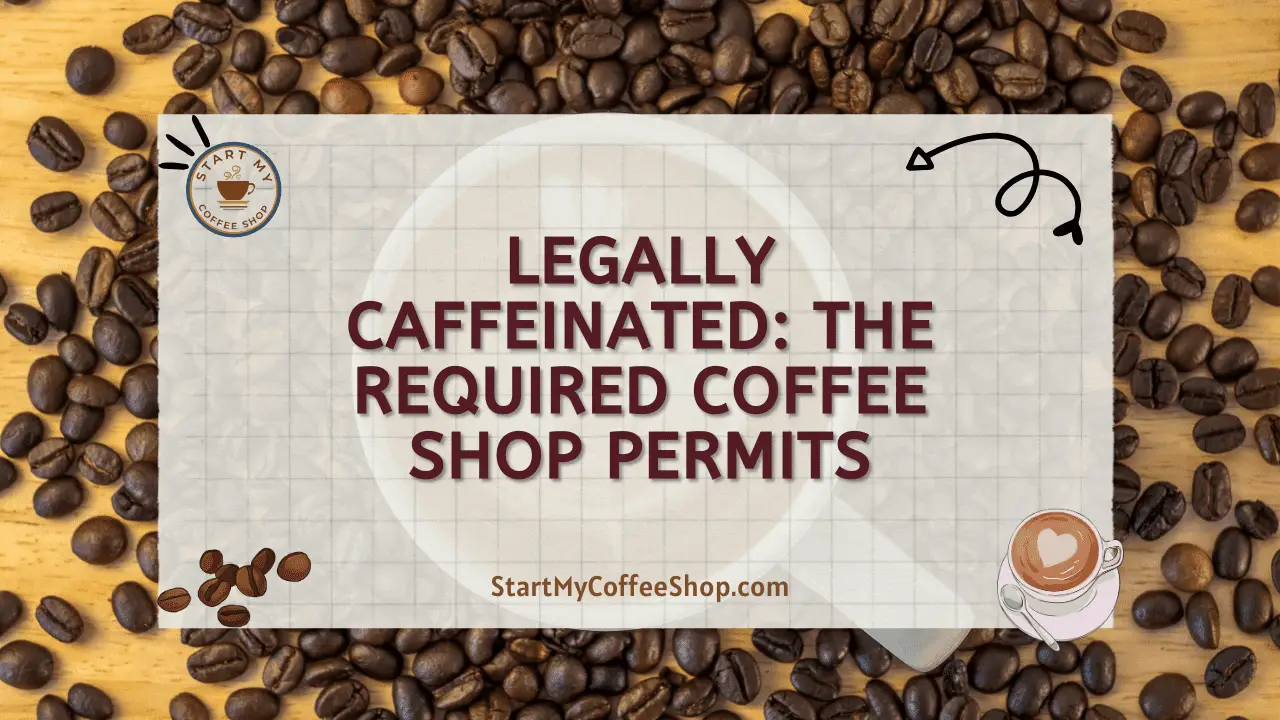Whether to save money, to make your own name, or just to be able to offer customers your own personal blend, roasting your own beans for your coffee shop is a trend that many coffee shop owners are getting into. The price of green, or unroasted coffee beans, can be lower than pre-roasted beans, and just a few sacks can provide you with coffee for weeks. Now all you need is to decide on which roasting machine will work best for you.
The best coffee roasting machine for your coffee shop depends on many factors, including the reason for roasting your own beans, your budget, the location where you’re going to place the roaster, and how you plan on using it. Factors such as the size of the roaster, the quality of consistency, and additional functions will all have an impact on which roaster will be right for you, as well as if you desire a traditional drum roaster or a specialty air roaster.
Whatever your reason for wanting to roast your own coffee beans, there are a few things you should know before deciding on which roaster is right for you and a few questions you should ask yourself first. Once you do, you’ll be better positioned to buy the very best roasting machine for your coffee shop.
Things to Ask
Some of these answers you may already know, and some you still might be figuring out, but before you can decide on the right roaster, you should know the why, what, when, where, and how. These first steps will narrow down which roaster will be best for you.
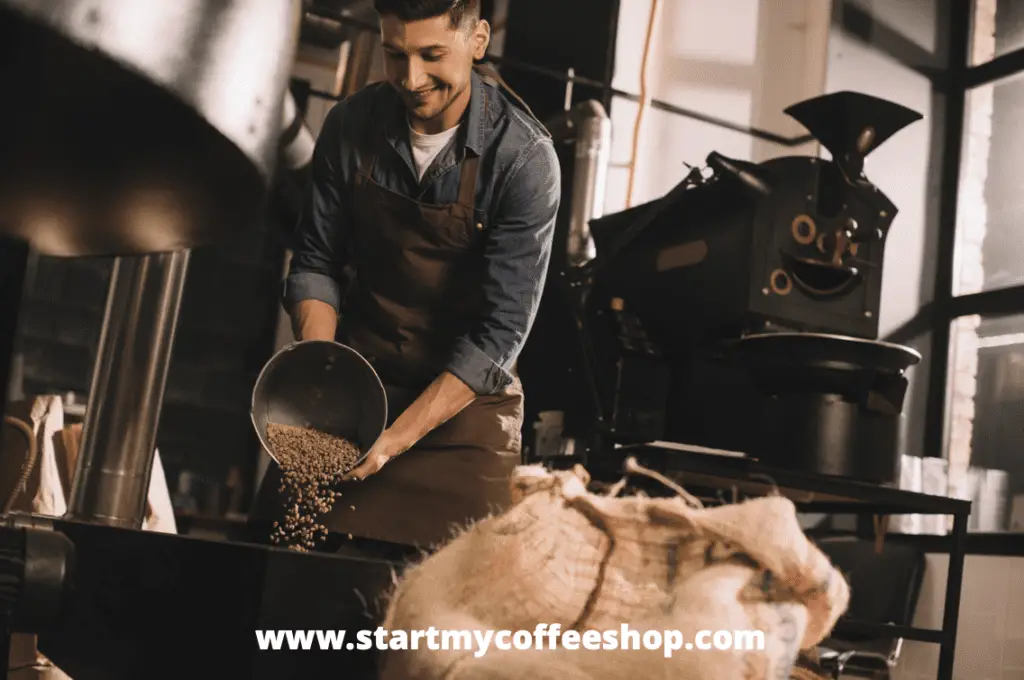
Why?
The essential question, and one you probably already know the answer to, is why you want to roast your own coffee beans. Your why may not have changed since the day you opened your coffee shop, or it may have sprung up from a new opportunity or a growing customer base.
A few of the reasons people decide to roast their own coffee beans include:
- Serving to customers in a cafe
- Selling to retail chains and grocery stores
- Expanding into off-site foodservice or catering
- Selling your brand online in the eCommerce industry
- Increasing the number of customers you can serve
- Growing your business into a chain
- Offering your own fresh-brewed blend to customers
Once you know you’re why, you will better be able to decide on the size, location, and functionality of the roasting machine you choose; knowing you’re why is half the battle.
What?
Your what is really two whats. What is your budget? And what is your rationale for purchasing this roasting machine? Both seem like simple answers but can turn out to be anything but.
What is your budget?
While a simple look at your books may provide the answer, you may actually have to dig deeper and answer some other questions before you get the answer to this one. For instance, do you plan to finance or pay in full? There are pros and cons to both. While financing may allow you to choose a more expensive machine, you may not want the added monthly bill, preferring to purchase a less expensive machine outright. Whatever you decide will affect the allotted budget for your roasting machine.
What is your rationale for this purchase?
Most likely, this is at least partially answered by your why. However, there may be other factors that fit here, such as if your reasoning is solid or outcome-dependent. If you know you absolutely need a roaster, you don’t need to question your rationale. But if you are putting your hopes on increasing your business because of your roaster, you may need to rethink it. More than likely, it will take you some time to perfect your roasting skills, and it will be a process of trial and error.
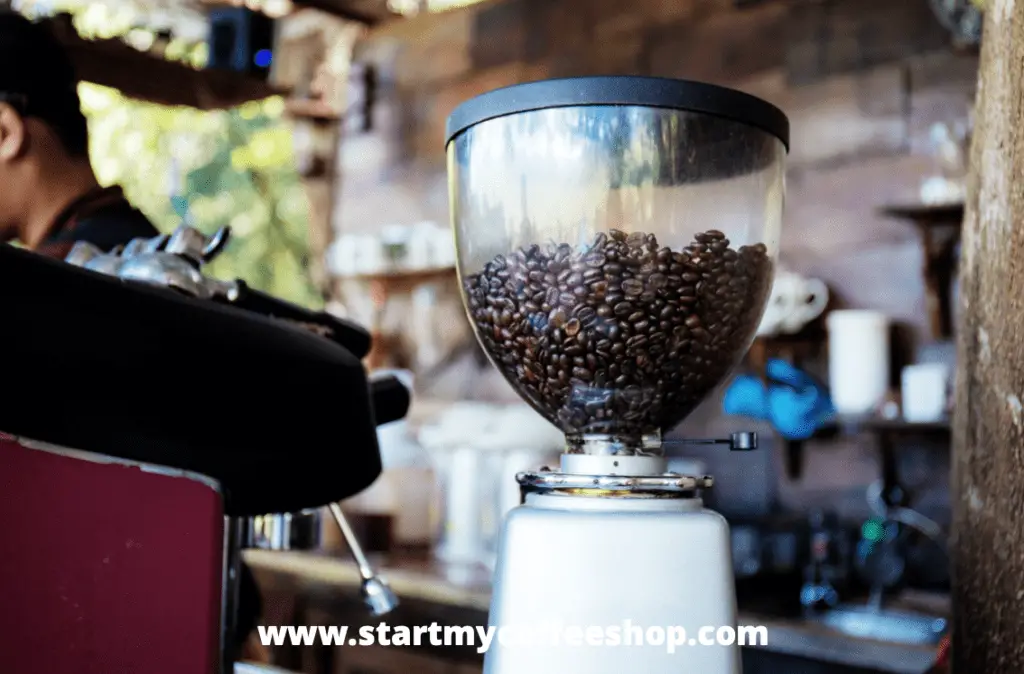
When?
When are you going to make this purchase? Timing is important when buying a large-scale piece of equipment, and it may take more time than you think to get everything set up and ready to go.
Timing of purchase
Making any big decision, especially when concerning your business, can take time. You’ll need to be able to do research, not just on the different types of roasters, but on everything else you’ll need to make having your own roasting machine work best for you. You’ll also need to find where you can purchase the one you want, when they will be available, and when and if there will be any discounts you can take advantage of.
Timing of other factors
There are other factors that play into purchasing a large piece of equipment like a roaster, such as inspections and any permits you may need to acquire. These factors will be dependent on the regulations and requirements put forth by your locale. Not only do you need to research any of these factors, but you need to make time to undergo any such inspections or to get any such permits. All of these usually take more time than we think they will. A good rule of thumb is to start finding these answers 6-12 months before you want to upgrade or purchase new equipment.
Where?
Where are you going to place your roasting machine? This may be one of the most important questions to answer due to three factors: regulations, efficiency, and safety.
Regulations
Your local regulations may require specific requirements, such as ventilation and added safety equipment. There may even be a requirement to keep your roaster a certain distance from your customers or to keep it closer to your loading dock. You’ll need to find out all of the regulations and requirements that your locale calls for before you decide where you’ll place your roaster.
Efficiency
Another factor you need to take into account with your machine is how efficient it will be in that location. Even if there are no formal requirements, you may want it closer to a loading dock or storage area, so you don’t need to carry sacks of beans too far. You may want to show off your roaster and place it in front of your shop. If so, you’ll need to figure out how efficient that will be for your employees and how safe it will be for them and your customers.
Safety
Safety is another factor when determining location. Roasting machines can get very hot and produce a lot of steam. If you place it upfront, you’ll need a way to keep it from injuring your customers, such as a plexiglass wall. You’ll also want to keep it somewhere safer for your employees, and requirements may deem that you need to have it near a fire extinguisher and even an eyewash station. Even if not required to have those, you may want them nearby just in case.
How safe the location is for your roaster is another factor to consider. Will you be placing it on secure flooring, or do you have old wooden floors? Even concrete floors can crack under the weight of a roasting machine. You’ll also need to be aware of where the ductwork is, along with any wiring. Roasting machines, especially when faulty, can become a fire hazard, and you’ll want your machine in a location that can withstand a fire should that ever happen.
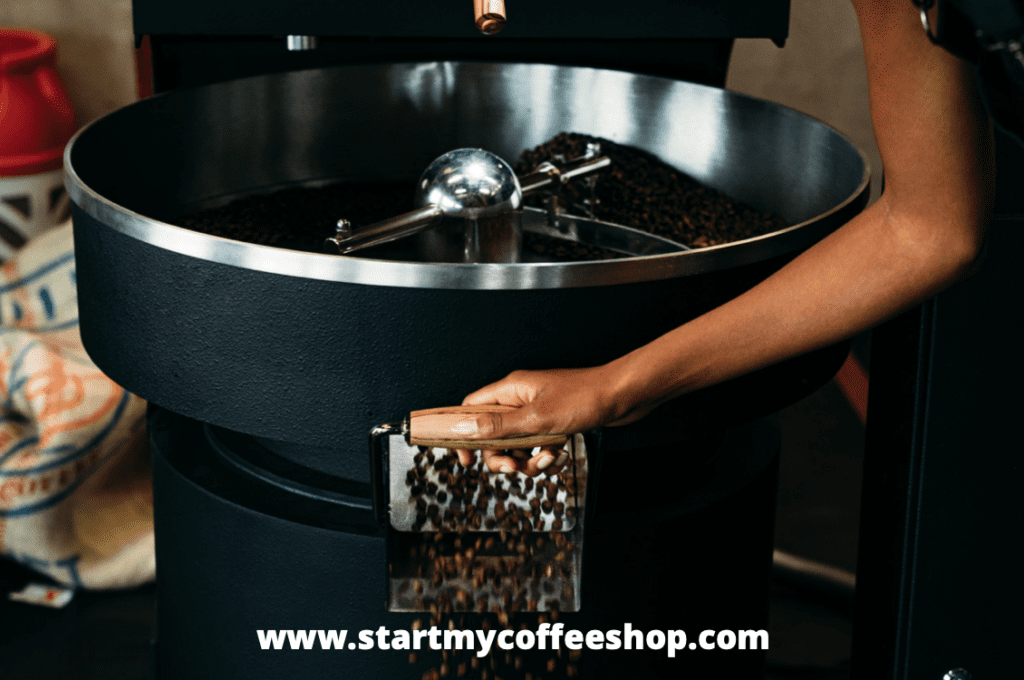
How?
The how is one you probably already know but may still be figuring out. How will you serve your customers? Obviously, if you own a coffee shop, you’re going to be serving your customers in your shop, but are there other reasons for purchasing a roaster? Are you expanding your business, and if so, how? Roasting and brewing coffee simply for in-store customers is one thing while selling your coffee to chain stores or online is another. You’ll need the answers to all these before you decide which roasting machine is perfect for you.
Check out more information on roasting your own coffee beans HERE.
Another What
Another what you may need to answer before purchasing a roaster is what coffee profile you are trying to get by roasting your own beans. Are you going to stick with the basics, or are you looking to expand into more specialty, artisanal blends? There are coffee roasters that can do everything, so before you choose which one you want, you’ll need to know the answer to this as well.
Things to Know
Once you have the answers to those questions, there are a few things you’ll need to know about coffee roasters in general before you choose one to buy. Coffee roasting machines come in an almost infinite number of sizes and shapes, as well as a spectrum of different functions. You’ll need a solid grasp of this knowledge before you decide which roaster will perform best for you.
Cost
The cost of a coffee roasting machine is usually determined by the volume of beans that will be processed in each batch. Once you know what the primary purpose of buying the machine is, you’ll better be able to decide on how many beans you need to roast with each batch. The larger the batch, the more the machine will cost. You’ll also want to know the cost per batch and how much roasting you’ll need to do to produce the amount you want. All of these can impact the price of the roaster.
Remember to keep in mind any additional costs, such as installation fees, permits, licenses, or insurance that you may need to acquire. It’s also a good idea to purchase spare parts for your roasting machine in advance. Some parts, like belts, are inexpensive and easy to keep in hand should you need them. Not having spare parts can cost you an entire day of roasting, which will end up costing you more than it would to have the parts handy. Identify which parts you can easily buy and store to save yourself lost time and money in the future.
Size
The size of your coffee maker will be directly related to your purpose. A 3-10 kg roasting machine may suffice for a small coffee shop, whereas you may need a 24 kg roaster for supplying to grocery outlets, restaurants, or other stores. One good tip is to always buy a bigger roaster than you think you’ll need.
There are two reasons for this. One is so you can grow into it as your business grows. Purchasing a machine that just fits your current needs may help your budget now, but it won’t if you find yourself needing to add a second or larger machine later. You’ll probably also want to roast all of your beans on a given day or day, and using a smaller machine can cause it to wear out more quickly than if you roast larger batches.
The other reason is that the majority of roasters work best at 70-80% capacity. Running a coffee roasting machine at 100% capacity can cause a negative effect on the quality of the roast as the beans don’t have enough room for them all to be roasted identically. An uneven roasting can cause your coffee to taste differently, and fewer people want to buy coffee if the taste keeps changing with each cup.
All of this means that you’ll want a larger roaster than you think you need. This will help improve the quality of the roasting, as well as keep your machine lasting longer. While a larger machine will mean a higher cost, needing to replace it within a relatively short amount of time will end up costing you double.
Consistency
Maintaining your own unique proportions and flavors is what will make your coffee shop stand out. You want your flavor to be recognizable as ‘yours’ and to have your customers expect that flavor when they walk into your shop. If you have a roasting machine that doesn’t produce consistent quality, it will negatively impact your coffee and your business.
Most coffee roasting machines today are designed to produce a consistent roast. However, some of it is determined by you as well. The size of your batches (how many beans you put in the roaster at a time), the amount of time you roast them, and the type of machine you have will all play a factor in the quality of your coffee beans.
More than likely, you’ll need to experiment and sample your own roasts for each batch to achieve the distinct flavor style you want. Changing time, batch size, and other factors will change your flavor, and you’ll need to tweak things to get it just the way you want it. But once you get it right, it will be ‘your’ coffee.
Functions
Coffee roasting machines can come with a variety of functions that will help you achieve the consistent quality you want. You can choose from gas or electric, air or drum roasters (more on these later), direct flame or infrared, cast iron or stainless steel, automatic or manually controlled, and other types of designs and functions that can affect how you roast your beans.
Each of these produces a different result, and you should take the time to research how each will affect your roasting. For instance, an automatic roaster might allow you to work on other things while your beans are roasting, while a manual one will allow you to have a more hands-on approach to your roasting, which you may want. Know your purpose, know your desire, and then know what functions will help get you there.
Types of Roasters
The two types of common roasters on the market today are the air roaster and the drum roaster. Each produces distinct and consistent coffee roasts, though they do so in differing styles.
-
Drum Roaster
The drum roaster is probably the roaster you think of first when you think of coffee roasting machines. As the name implies, it’s designed as a large drum that you fill with your raw coffee beans. The beans are then moved around the drum while being heated externally in order to produce a consistent roast. The capacity of drum roasters usually varies between 5 kg to 120 kg.
Drum roasters typically also come with a small shovel attached to one of the sides, with which you can check on the roasting level to make sure that your beans are being roasted to your liking. Checking the beans throughout the process assures that the beans are roasting evenly and that they aren’t getting overdone or burnt. Remember, maintaining the consistency of your roasts is what’s important to produce the flavor of coffee you want.
-
Air Roaster
Air roasters, developed in 1976 by chemical engineer Mike Sivetz, are designed a little differently. Instead of moving the beans around like in a drum roaster, the beans actually levitate over a bed of hot air inside the roasting chamber. Think of a ping pong ball levitating over a hairdryer, and you’ll understand the concept. This bed of hot air is referred to as the ‘fluid bed.’ Some air roasters are even called fluid bed roasters.
As the beans float in the roasting chamber, they flip from side to side, producing the even roast air roasters are particularly known for. Another bonus to air roasters is that as the beans float, their outer husks fall off and are blown to the side, leaving just the perfectly roasted bean. These bean husks are called chaff, and they are more acidic and bitter than the bean itself. While some roasters enjoy the bitterness attained by brewing some husks with their beans, others prefer a smoother coffee, which requires separating the beans from their husks.
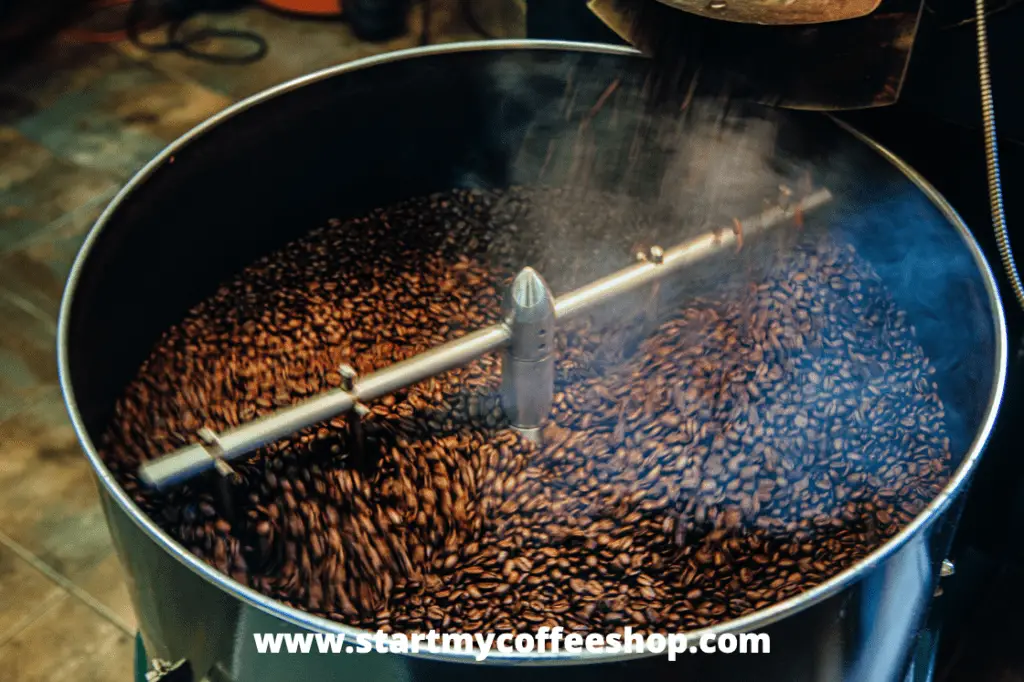
If you want a smoother flavor and an easier time keeping the beans separate from the chaff, you might just want an air roaster. Another benefit is that they roast beans quicker than drum roasters do. While a drum roaster may take 15 minutes or more to roast a batch, an air roaster can roast the same amount in 5-8 minutes. They may be more expensive, but some coffee drinkers prefer the cleaner and more efficient brew that air roasters deliver.
Maintenance and Operational Tips
Once you do decide on a roasting machine, you’ll want to operate it as efficiently as possible and make sure to service it often. Some tasks should be done after each roast, while others can be taken care of once a month. Keeping your roaster in great condition will not only help produce consistent quality coffee but will also prevent damage and breakdowns of the machine, which can cause headaches and profit loss.
Research the manufacturer’s recommendations for your coffee roaster and create a maintenance schedule using those recommendations. Poor or improper maintenance can not only lead to inconsistent quality but can also create fire risks and negatively impact air quality in your shop. As Benjamin Franklin said, an ounce of prevention is worth a pound of cure.
Let the roaster cool down after each batch. The amount of time you should allow for this cooling period will depend on the type and brand of machine you purchased. Again, be sure to look into the recommendations from the manufacturer about this. While you may be tempted to skip it, it can save your machine from wearing out prematurely.
After cooling, try to remove as much of the chaff as you can from in or under the roasting chamber or drum. Remember, the chaff produces a bitter flavor, so the less of it in each batch can produce a smoother roast for your coffee.
Clean out the main filter once a week or as recommended by the manufacturer. Depending on the size of your batches and how many you roast, this may need to be done sooner or later than a week but still needs to be done regularly in order to produce consistent quality. As you may have already figured out, consistent roasting quality is the key to great coffee.
When cleaning your roaster, be sure to use a cleaner that cuts through grease, and use a scrubbing pad to clean out the oil left behind from each roast. Your manufacturer’s recommendations may propose a time frame for this, but it typically should be done once a month, at least.
Set aside a day or two a week to do all your roasting for that week. Roasting all your beans on this day or days will prevent you from scrambling to do so throughout the week. It also provides a schedule for roasting that you can follow for other things, such as bean delivery.

Frequently Asked Questions
Among the most consistent coffee roasting machines is the 10 kg Promaster. This machine is a traditional conduction drum roaster with adiabatic curing to increase heat efficiency, as well as an integrated safety system. Toper Roasters can range between 1-15 kg capacity and are known for their simple control features and cooling tray, as well as more current technology such as touchscreens and coffee profiles. The Probat Bean Roaster is a more high-end roaster that comes in a variety of sizes and is known for its ease of use and energy efficiency. For more artisanal roasting, both the Genio Intelligent Roasters and the Mill City Roaster offer a variety of sizes and functions that give near-total control to the roaster.
As with most appliances, the price of coffee roasters depends on a variety of factors, such as type, size, and roasting capacity. The size and the operator assist functions affect the price the most. A 10-kilogram roaster may cost anywhere between $6,000 and $30,000, while a high-capacity machine such as a 60-kilogram roaster can be upwards of $100,000. Coffee roasting machines today can include almost any type of function you can think of, and each will have an effect on the price.
To learn more on how to start your own coffee shop checkout my startup documents here
Please note: This blog post is for educational purposes only and does not constitute legal advice. Please consult a legal expert to address your specific needs.

Hi! I’m Shawn Chun
My adventure in coffee began when I first launched my first coffee shop back in the early 2000s. I had to figure out so many things on my own and to make it worse within 2 years of opening two large corporate coffee chains moved in just blocks away from me!
As I saw smaller and even some larger coffee shops in the neighborhood slowly lose customers to these giant coffee chains and slowly close up shop, I knew that I had to start getting creative…or go out of business.
I (like you may be) knew the coffee industry well. I could make the best latte art around and the foam on my caps was the fluffiest you have ever seen. I even had the best state-of-the-art 2 group digital Nuova Simonelli machine money could buy. But I knew that these things alone would not be enough to lure customers away from the name brand established coffee shops.
Eventually, through lots of trial and error as well as perseverance and creativity I did find a way to not only survive but also thrive in the coffee/espresso industry even while those corporate coffee chains stayed put. During those years I learned to adapt and always faced new challenges. It was not always easy, however, in the end, I was the sole survivor independent coffee shop within a 10-mile radius of my location. Just two corporate coffee chains and I were left after that year. All told the corporate coffee chains took down over 15 small independent coffee shops and kiosks and I was the last one standing and thriving.
Along the years I meet others with the same passion for coffee and I quickly learned that it is not only “how good a barista is” that makes a coffee shop successful, but the business side of coffee as well.
Hence why I started this website you are on now. To provide the tools and resources for up and coming coffee shop owners to gain that vital insight and knowledge on how to start a coffee shop successfully.
Stick around, browse through my helpful blog and resources and enjoy your stay! With lots of LATTE LOVE!
Shawn






